Last Updated on June 7, 2023 by Ellen
One shovel. One hammer. One hand saw. And a bunch of machetés (known as bolos in the Philippines).
That’s all that was used to build the bridge in the photos posted here.
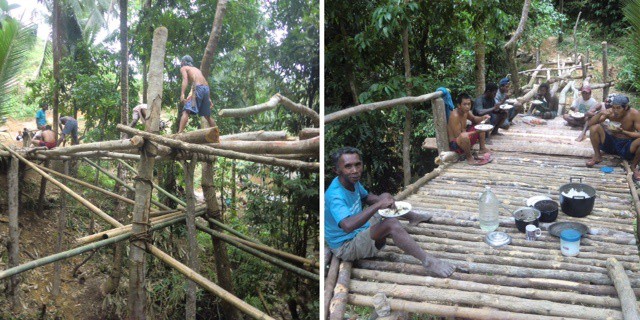
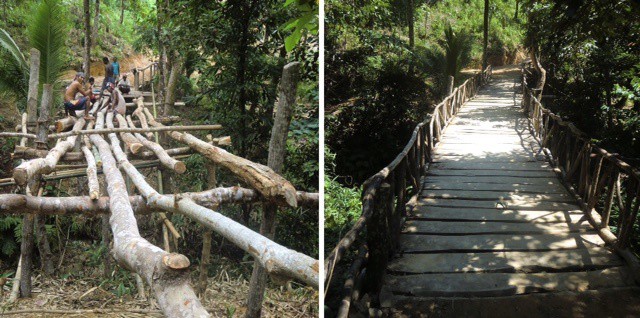
I could hardly believe my eyes as I watched the building endeavor progress over several weeks. Marvelous engineering!
The bridge was built by the indigenous Ati tribe who are our neighbors here in Malay, Aklan, Panay, Philippines (our temporary pandemic home) – just a few miles from the world-class tourist beaches of Boracay.
The structure is a replacement for the small, deteriorating footbridge (seen in the photo below) that was previously used to cross a stream and ravine en route to the hilltop Ati village where we have sponsored several improvement and sustainability projects.
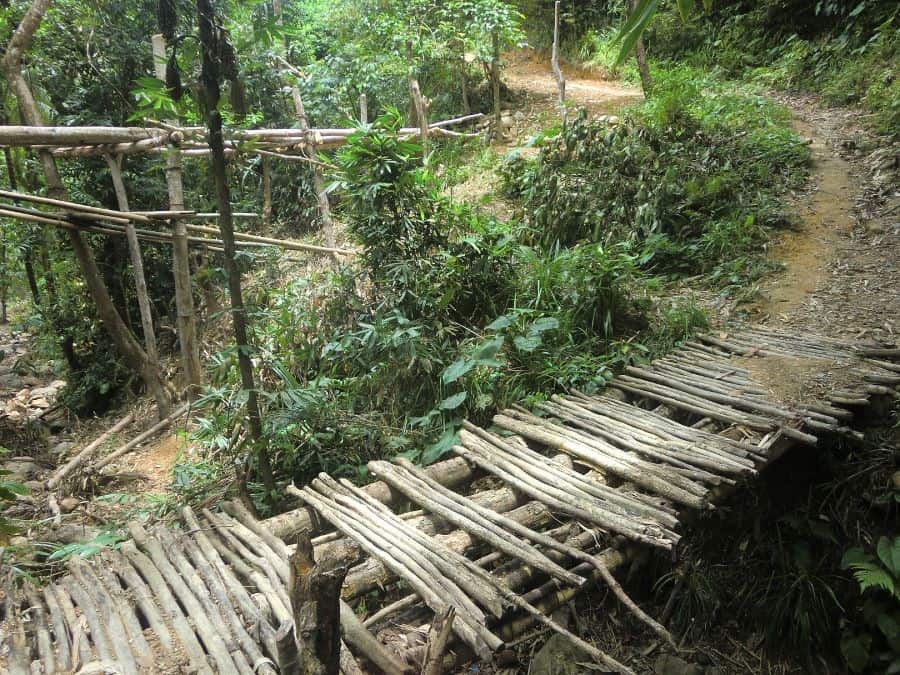
We were happy to participate in the bridge project too — and astounded at the finished overpass.
Truthfully, I thought the tribe was going to rehabilitate the old bridge when the Chief first asked for project funds. We started by contributing money for several kilos of nails and big steel spikes.
My jaw fell open when I first visited the new construction scene.
The span is at least 80 feet long, more than eight feet wide, and 25 feet high in the center. It appears to me it could support an automobile. (I have ridden across on motorcycles – access by auto is impossible). Sturdy safety rails and earthwork ‘ramps’ at each end make it feel almost like some government transportation project.
Nope. One shovel. One hammer. One hand saw. And a bunch of bolos.
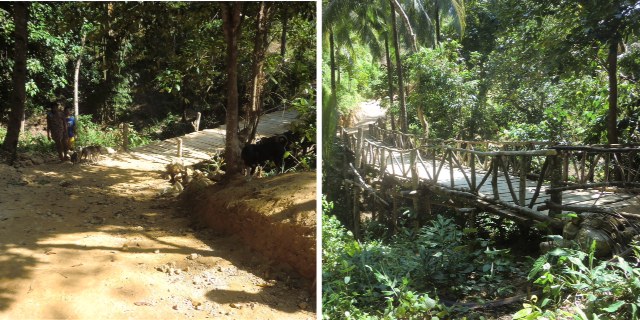
To be accurate, an outside third party with chain saw was hired to cut lumber: the huge, thick, wooden decking slabs. But the Ati alone did all the design, digging, timber hauling and placement, construction, and finishing.
Our total outlay for the incredible effort – less than $250, including rice and egg lunches for the 12 to 15 man crew.
Smartly, four live coconut trees are incorporated into the structure. About six more massive cut tree trunks were ‘replanted’ deeply into the hillsides to provide further support. River rocks and soil were hand-carried and compacted to create the ‘on/off ramps’. Solignum wood preservative/termite protector will add longevity to the undertaking.
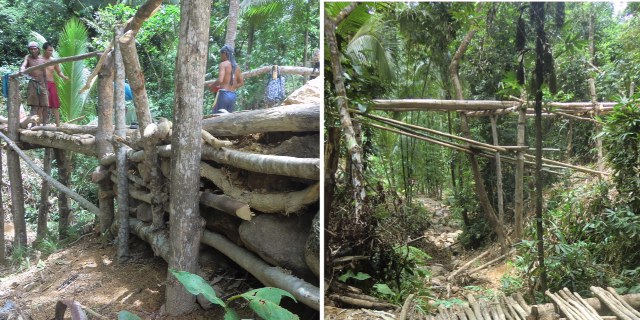
Perhaps most amazingly, I didn’t see any tape measure, level, square, plumb bob, chalk line, guide string, etc. in use at all! The whole thing was envisioned and executed without such standard building aids! Ati bolos made it all fit together.
Every time I cross the bridge I marvel at the outcome.
I don’t know how ancient civilizations engineered their enduring edifices. To this day the constructs of the Egyptians, Greeks, Khmer, Mayans, and others continue to confound us all. But while observing my Ati friends building their jungle bridge, I couldn’t help but feel I was witnessing a similar ‘primitive miracle’. And the final functional product is every bit as awesome to me.
One Shovel. One hammer. One hand saw. And a bunch of bolos.
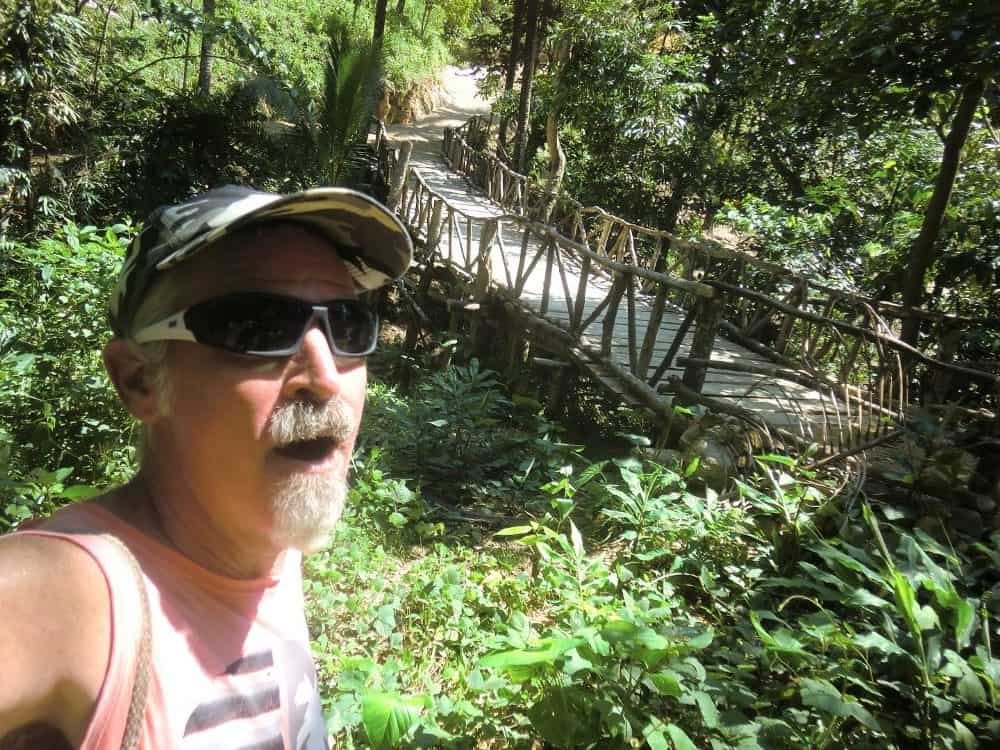
As always, be thankful and generous, happy trails and more beer.
Life is now!
New to earthvagabonds.com? See why our philosophy is: Life is Now.

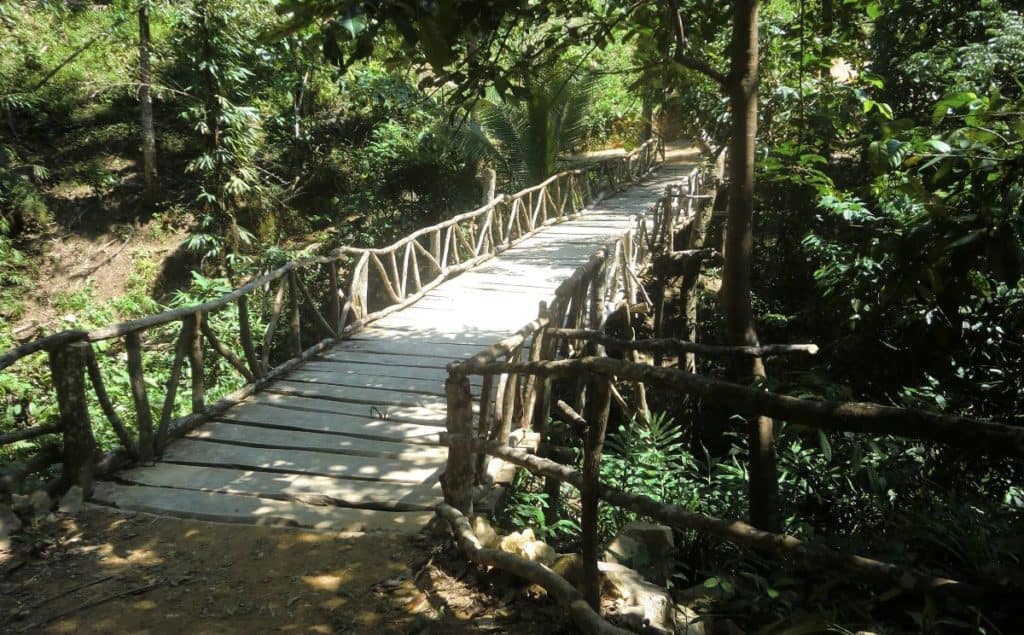
OMG!!! I’M ABOUT TO BAWL RIGHT NOW!!! IT’S REALLY NO MISTAKE THAT I AM HERE!!! I recently studying the ancient, esoteric story of Philippines and yesterday, I just read that Panay Island is considered as the ‘Sacred Center’ and the ‘Four Pillar’. And now, how you describe our Ati people is giving me chills. My heart is pounding so hard right now.
It’s like the more I dive deep here in your blog, the more it transports me to past. The more it makes the connection between Mayan Civilization and Philippines undeniable. The more I find answers to my beloved Philippines’ lost story. The more I feel that a piece of me is being found.
How can I thank the both of you? May you fill your life with more love, peace, joy, and a channel of blessing here on earth..
Thank you again, Theo and Ellen ❤️
Got to love resourceful people…??